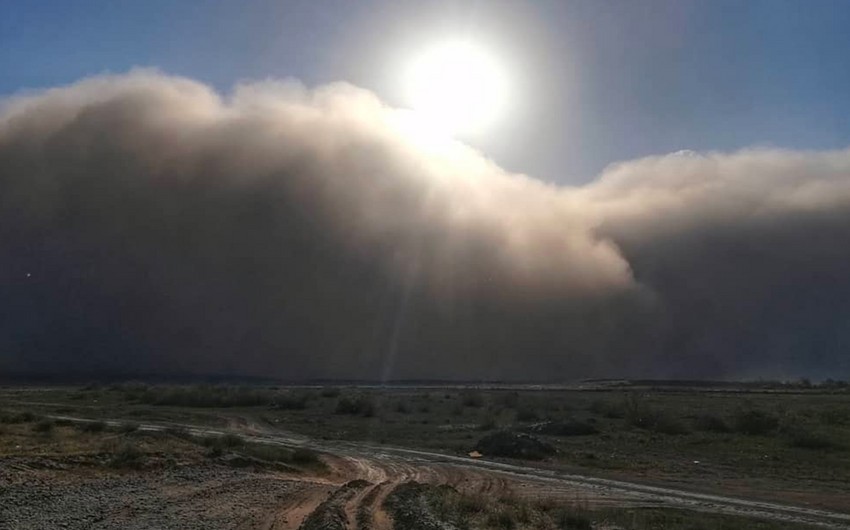Sand and dust storms are an underappreciated problem now “dramatically” more frequent in some places worldwide, with at least 25% of the phenomenon attributed to human activities, according to the UN Convention to Combat Desertification (UNCCD), Report informs, citing foreign media sources.
According to the UNCCD, an estimated 2 billion tons of sand and dust now enter the atmosphere every year, an amount equal in weight to the 350 Great Pyramids of Giza.
While sand and dust storms (SDS) are a regionally common and seasonal natural phenomenon, the problem is exacerbated by poor land and water management, droughts, and climate change, according to UNCCD experts.
Says Ibrahim Thiaw, UNCCD’s Executive Secretary: “The sight of rolling dark clouds of sand and dust engulfing everything in their path and turning day into night is one of nature’s most intimidating spectacles. It is a costly phenomenon that wreaks havoc everywhere, from Northern and Central Asia to sub-Saharan Africa.”
“Sand and dust storms present a formidable challenge to achieving sustainable development. However, just as sand and dust storms are exacerbated by human activities, they can also be reduced through human actions,” adds Thiaw.
“Sand and dust storms (SDS) have become increasingly frequent and severe, having substantial transboundary impacts, affecting various aspects of the environment, climate, health, agriculture, livelihoods, and the socioeconomic well-being of individuals. The accumulation of impacts from sand and dust storms can be significant,” says Feras Ziadat, Technical Officer at the Food and Agriculture Organization of the UN (FAO), Chair of the UN Coalition on Combating Sand and Dust Storms.
Recent statistics published via UNCCD’s new data dashboard () show that the world is now losing nearly 1 million square kilometers of healthy and productive land every year—some 4.2 million square kilometers between 2015 and 2019, or roughly the combined area of five Central Asian nations: Kazakhstan, Kyrgyzstan, Tajikistan, Turkmenistan, and Uzbekistan.


 https://images.report.az/photo/65fcf7d7-4986-3534-91c5-eeda87edf645.jpg
https://images.report.az/photo/65fcf7d7-4986-3534-91c5-eeda87edf645.jpg

